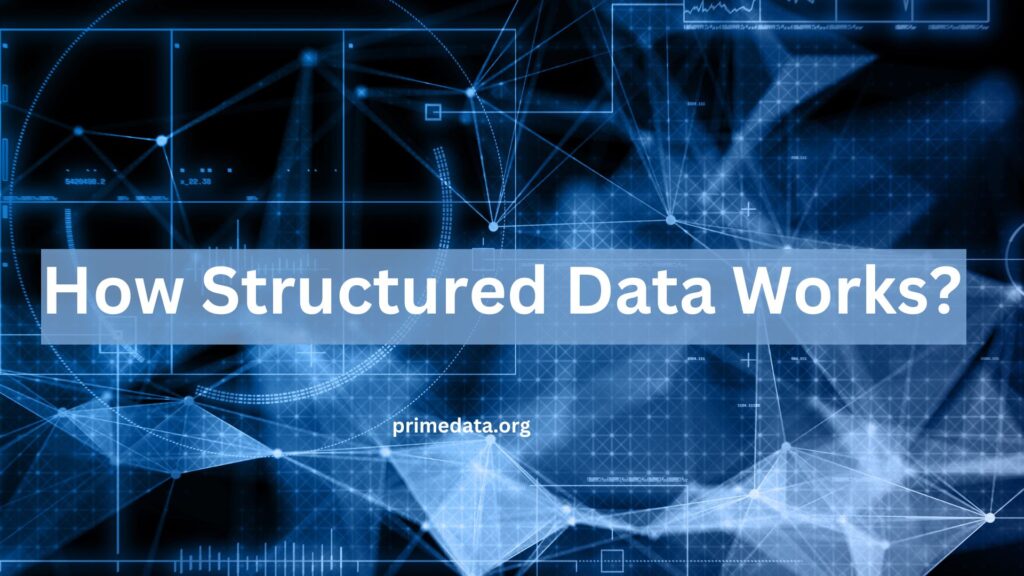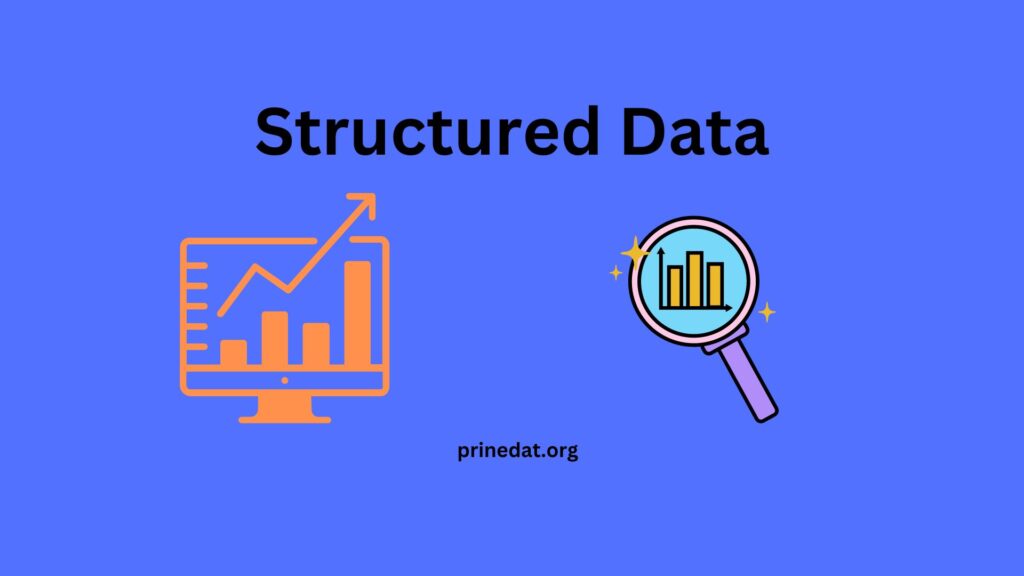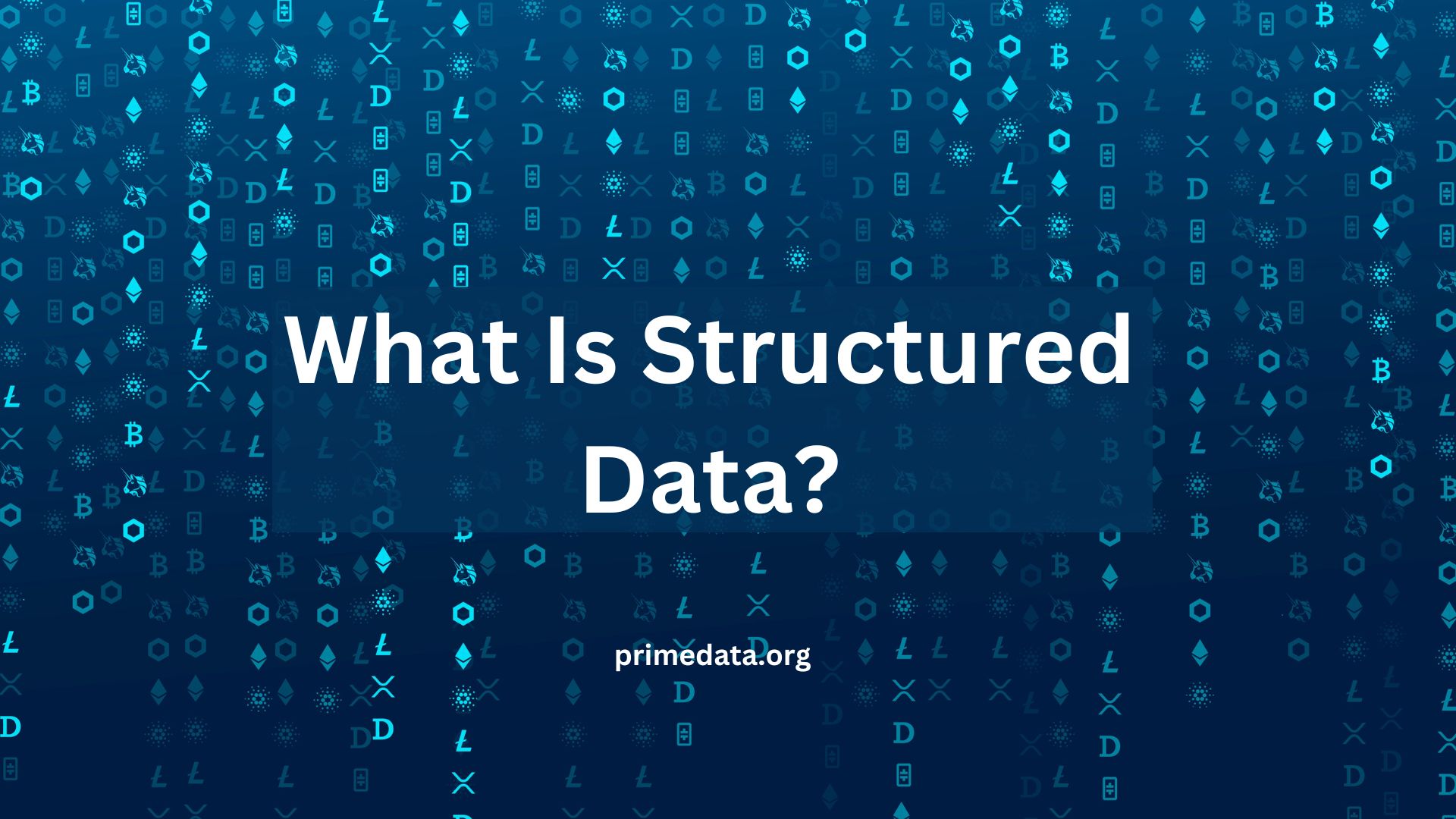Structured records are critical in our modern-day digital generation for various reasons, optimizing seek engine outcomes and correctly handling data. This essay centres around the concept of " structured statistics." This evaluation will discover unique types, offer examples, explain how they paint, and emphasize their significance. We will even discuss the professionals and cons of dependent facts and the most common places to locate such records. It would help if you implemented dependent statistics to increase your internet site’s publicity and consumer experience. This manual will show you the way.
What is Structured Data?
Structured statistics refers to a particular layout employed to arrange and display statistics so search engines can comprehend and feel them. The device utilizes standardized coding formats, including JSON-LD, Microdata, RDFa, and Schema.Org, to provide context and significance to the content gift on a website. When search engines extract applicable information and display it as wealthy snippets in seeking outcomes, it notably enhances the overall person reveal.
Types of Structured Data
Various varieties of structured facts formats are widely used. Some of the maximum usually utilized ones are:
- Schema.Org: In the area of information agency, the Schema.Org initiative is a harmonious collaboration uniting outstanding engines like Google Google, Microsoft, Yahoo, Yandex, and other key gamers. This grand coalition seeks to nurture cooperation and foster a harmonious synergy amongst these formidable entities. At its middle, Schema.Org affords an in-depth array of alternatives meticulously crafted to annotate based records. It bestows upon it an air of mystery of profound fee and motive, enriching the person’s experience with an intriguing contact.
- JSON-LD (JavaScript Object Notation for Linked Data): JSON-LD, an acronym for JavaScript Object Notation for Linked Data, is a widely applied format for representing structured information using JavaScript Object Notation. This software is a treasured aid for web authors searching for a simplified approach to incorporating structured information into HTML code. This functionality enhances the capacity of serps to realize and efficiently deal with the records.
- Microdata: Microdata is a useful extension of HTML5 that permits for inclusion of semantic annotations inside HTML content. Developers can add precise properties and values to positive content on a website. This can mark product info, event facts, and other relevant data.
- RDFa (Resource Description Framework in Attributes): RDFa is every other HTML5 extension that consists of semantic annotations within HTML content. It adds structured statistics to the HTML, uses unique attributes, and supplies context and meaning to the content material for search engines.
Read More: What is Prompt Engineering? A Comprеhеnsivе Guidе
Examples of Structured Data
Structured statistics unearths its utility in diverse content material sorts, along with articles, merchandise, and occasions, enriching the consumer experience and search outcomes.
- Structured Data for Articles: For articles, dependent information encompasses essential details like the headline, author, publish date, and word count. This empowers search engines to show extra records, like featured pictures and publication dates, in search results.
- Structured Data for Products: In e-commerce, structured product statistics offer crucial data, like the product’s name, rate, availability, and client critiques. As a result, engines like Google can show applicable product details directly to seek consequences, simplifying the person’s search system.
- Structured Data for Events: For event-associated content material, structured information consists of critical information, like the event’s title, date, time, location, and ticket statistics. Search engines use this information to show off occasion information in search results, encouraging customers to attend or make price-tag purchases.

How Structured Data Works
The functioning of established information is based on its integration into the website’s HTML code. As engines like Google move the internet site slowly, they become aware of the based information markup, which provides context and importance to the content material. Consequently, engines like Google use this based information to create visually appealing and informative, wealthy snippets for customers to seek outcomes.
For example, think a website has well-applied structured information for a recipe. In that case, the hunt engine may display the recipe’s call, cooking time, rankings, or even a thumbnail picture without delay inside the seek outcomes. This more suitable presentation can appeal to more clicks and improve user engagement with the hunt effects.
The Importance of Structured Data
Structured records are important in SEO strategies because they complement serps’ comprehension of a website’s content. Websites with dependent data will likely floor in pertinent search outcomes, attracting more natural traffic. Additionally, engines like Google utilize dependent information to create wealthy snippets, furnishing customers with valuable insights about net pages before clicking hyperlinks. This more suitable consumer revel contributes to higher click-on-via fees and advanced engagement with the website.
Furthermore, dependent facts prove vital in optimizing websites for voice seek. Given the developing reputation of voice-activated gadgets and digital assistants, based statistics empowers engines like Google to provide unique and relevant solutions to voice queries, further elevating the personal experience.
Where Does Structured Data Come From
Structured records can originate from various sources, and website owners can manually generate them or use equipment like Google’s Structured Data Markup Helper or Schema.Org’s generator to create the required markup for their content. Many content material management systems (CMS) and website structures offer plugins or integrated functions that automate the process, ensuring accurate structuring of content and more suitable search-engine friendliness.
Common Sources of Structured Data
The data used for based statistics markup can come from diverse resources, inclusive of:
- Databases: Websites that use databases to store and manipulate their content material can extract applicable facts from those databases and follow established statistics markup to present it to serps.
- CSV Files: Comma-separated values (CSV) files can shop-based statistics in a tabular layout. Websites can import information from CSV documents to generate structured records markup.
- Web Scraping: Web scraping is the process of extracting information from websites. Websites can scrape records from other online sources to create dependent statistics for their content.
Ensuring the accuracy and consistency of the information is vital for the powerful implementation of established data. Search engines depend upon established information to provide accurate and applicable data to users, so keeping the records’ integrity is critical.
Read More: Data Science: Unraveling the Secrets of the Digital Age
Characteristics of Structured Data
Structured records possess several essential traits:
- Consistency: Structured facts must be constant across all relevant pages of an internet site. Consistency guarantees that search engines like Google can rely on the statistics and consistently show correct statistics to customers.
- Reliability: The information used for based statistics markup must be dependable and trustworthy. Search engines prioritize dependable statistics whilst developing rich snippets to seek consequences.
- Scalability: Websites must scale structured information implementation successfully, especially for websites with many pages or constantly converting content material. Scalability guarantees that each applicable content material benefits from structured information markup.
Advantages of Structured Data
Implementing dependent information offers several blessings:
- Enhanced Search Engine Visibility: Websites with established data are much more likely to appear in featured snippets and other distinguished seek result positions, increasing their visibility to potential users.
- Increased Click-Through Rates (CTR): Rich snippets generated from based facts offer greater records and entice extra clicks from customers who locate the displayed content material applicable to their seek queries.
- Better User Experience: Structured statistics improves the consumer experience by supplying precious statistics immediately in seek effects, allowing users to make knowledgeable selections without clicking the link.
- Voice Search Optimization: With the rise of voice seek, dependent data enables search engines like Google to provide extra correct and applicable solutions to voice queries, which can cause increased site visitors from voice-activated gadgets.

Disadvantages of Structured Data
While established statistics offers several blessings, it additionally comes with some drawbacks:
- Time-Consuming Implementation: Adding based facts markup to a website may be time-eating, mainly for huge websites with several pages.
- Maintenance Challenges: Websites must frequently replace and keep dependent statistics to ensure accuracy and relevance. This ongoing effort may be tough, especially for websites with regularly converting content.
- Compatibility Issues: Different platforms and gadgets might also interpret established statistics markup differently, main to compatibility problems and ability discrepancies in seeking consequences.
Read More: 15 Data Science Tools You Can’t Ignore
Conclusion
In the end, dependent data is a powerful tool that can extensively improve an internet site’s visibility in seek effects and enhance the overall person revel in. By offering context and that means to content, dependent information permits search engines like Google and Yahoo to recognize and show relevant statistics to customers. Though it can require some effort to enforce and maintain, its SEO and user engagement advantages make it a precious asset for any website.
Frequently Asked Questions (FAQs)
What are structured datas?
Structured datas refer to a particular layout of organizing and offering records to help serps understand website content better.
How do established statistics paint?
When a search engine crawls an internet site, it seems for facts markup, which allows the introduction of rich snippets in search results.
Why is structured information essential for search engine optimization?
Structured data improve an internet site’s seek engine scores, click-thru costs, and normal, natural traffic.
What are Common Sources of Structured Data?
It can come from databases, CSV documents, and net scraping.
What are the advantages of structured data?
Implementing datas leads to better search engine visibility, accelerated click-through quotes, and improved user experience.
